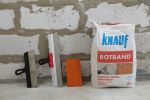18.04.2019, 09:48
Ministry of Nature Sent to Government Projects in the Arctic for 10.5 Trillion Rubles
Source: OREANDA-NEWS
OREANDA-NEWS. The Ministry of Nature sent to the government 118 projects in the Arctic for 10.5 trillion rubles, which should become a cargo base for the Northern Sea Route. Many of these projects are private, but they will require state support.
This list includes projects for the extraction of solid minerals, oil and gas, infrastructure projects (construction of roads, seaports and airports), as well as projects in the field of tourism and the food industry. Over the past year, the Ministry of Natural Resources has analyzed the potential of 118 projects in the Arctic, which will become the cargo base of the Northern Sea Route, said Dmitry Kobylkin, the head of department, on Monday, April 15. He estimated their total budget at about 10.5 trillion rubles. According to the minister, currently, the basis of freight traffic along the Northern Sea Route is liquefied natural gas (LNG), oil, condensate, solid minerals and coal.
The list includes 25 active projects, as well as ideas under construction or on the level. The existing ones include, for example, the development of the Gazprom Neft Novoportovskoye field worth 442.6 billion rubles, the Rosneft field of the Vankor cluster (437.4 billion rubles) and the Rospan gas project (27.4 billion rubles), and Achimgaz, a joint venture of Gazprom and German Wintershall (107.3 billion rubles) and LNG projects of Novatek in Yamal. Among the promising ones is the development of the Payakha group of oil fields of Neftegazholding by Edward Hudainatov for 330 billion rubles. and the construction of a coal terminal at the port of "Indiga" with the participation of AEON Roman Trotsenko and Russian Railways worth 258 billion rubles.
The Northern Sea Route is the shortest water route between the European part of Russia and the Far East. It begins at the Kara Gate and ends with the Bering Strait. This route is shorter than the route through the Suez Canal, by 40%, it connects the ports of the Arctic and the major rivers of Siberia.
This list includes projects for the extraction of solid minerals, oil and gas, infrastructure projects (construction of roads, seaports and airports), as well as projects in the field of tourism and the food industry. Over the past year, the Ministry of Natural Resources has analyzed the potential of 118 projects in the Arctic, which will become the cargo base of the Northern Sea Route, said Dmitry Kobylkin, the head of department, on Monday, April 15. He estimated their total budget at about 10.5 trillion rubles. According to the minister, currently, the basis of freight traffic along the Northern Sea Route is liquefied natural gas (LNG), oil, condensate, solid minerals and coal.
The list includes 25 active projects, as well as ideas under construction or on the level. The existing ones include, for example, the development of the Gazprom Neft Novoportovskoye field worth 442.6 billion rubles, the Rosneft field of the Vankor cluster (437.4 billion rubles) and the Rospan gas project (27.4 billion rubles), and Achimgaz, a joint venture of Gazprom and German Wintershall (107.3 billion rubles) and LNG projects of Novatek in Yamal. Among the promising ones is the development of the Payakha group of oil fields of Neftegazholding by Edward Hudainatov for 330 billion rubles. and the construction of a coal terminal at the port of "Indiga" with the participation of AEON Roman Trotsenko and Russian Railways worth 258 billion rubles.
The Northern Sea Route is the shortest water route between the European part of Russia and the Far East. It begins at the Kara Gate and ends with the Bering Strait. This route is shorter than the route through the Suez Canal, by 40%, it connects the ports of the Arctic and the major rivers of Siberia.




Комментарии